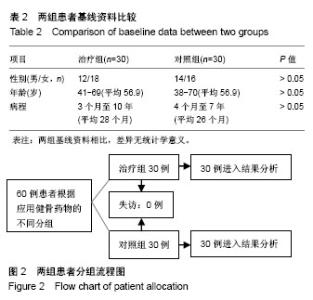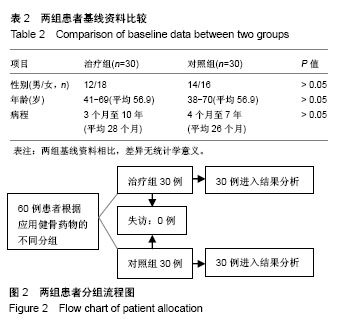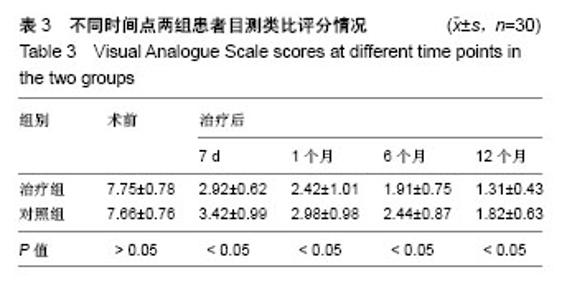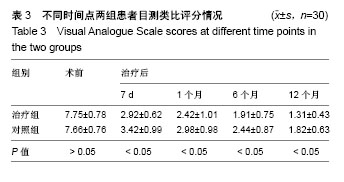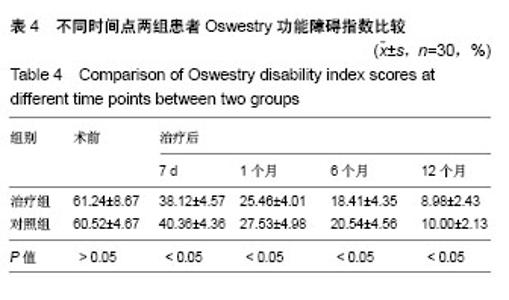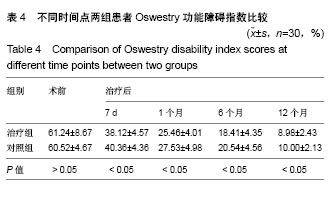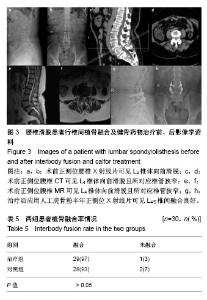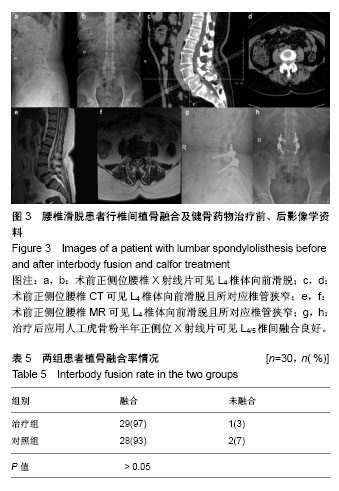| [1] 姜欢畅,王吉兴.退变性腰椎滑脱治疗的现状与争议 [J].中国矫形外科杂志,2010,15):1285-1287.[2] Ghogawala Z, Dziura J, Butler W E, et al. Laminectomy plus Fusion versus Laminectomy Alone for Lumbar Spondylolisthesis. N Engl J Med.2016; 374(15):1424-1434.[3] Inose H, Kato T, Yuasa M, et al. Comparison of Decompression, Decompression Plus Fusion, and Decompression Plus Stabilization for Degenerative Spondylolisthesis: A Prospective, Randomized Study. Clin Spine Surg.2018;31(7):E347-e352. [4] Chen Z, Xie P, Feng F, et al. Decompression Alone Versus Decompression and Fusion for Lumbar Degenerative Spondylolisthesis: A Meta-Analysis. World Neurosurg.2018; 111(e165-e177. [5] Kim CH, Chung CK, Choi Y, et al. Increased Proportion of Fusion Surgery for Degenerative Lumbar Spondylolisthesis and Changes in Reoperation Rate: A Nationwide Cohort Study with a Minimum 5-Year Follow-Up. Spine (Phila Pa 1976). 2018 Jul 19. doi: 10.1097/BRS.0000000000002805. [6] Vorhies JS, Hernandez-Boussard T, Alamin T. Treatment of Degenerative Lumbar Spondylolisthesis With Fusion or Decompression Alone Results in Similar Rates of Reoperation at 5 Years. Clin Spine Surg.2018; 31(1):E74-e79. [7] 钟华,刘建纯,夏威,等.不同植骨融合术治疗腰椎滑脱症的疗效分析[J].组织工程与重建外科杂志,2012,8(2):99-102.[8] 朱庆三.如何保障脊柱植骨融合[J].中国脊柱脊髓杂志, 12(5): 329-330.[9] 何保玉,滕涛,刘宝戈,等.金天格胶囊治疗原发性骨质疏松症的临床疗效观察[J].中国骨质疏松杂志,2015,21(2):168-174.[10] 王清玉,韩大为.人工虎骨粉的药理作用研究进展[J].中医正骨, 2006,18(11):70-71.[11] 祝捷,董崇周,徐将,等.人工虎骨对原发性骨质疏松症患者骨钙素和抗酒石酸酸性磷酸酶5b的影响[J].中国临床保健杂志, 2012, 15(2):162-164.[12] Brantigan JW, Steffee AD. A carbon fiber implant to aid interbody lumbar fusion. Two-year clinical results in the first 26 patients. Spine (Phila Pa 1976).1993;18(14):2106-2107. [13] 高志强,李洋,罗飞.对脊柱椎间融合的影像学评价策略 [J].中国组织工程研究,2015,19(48):7825-7830.[14] Samuel A M, Moore HG, Cunningham ME. Treatment for Degenerative Lumbar Spondylolisthesis: Current Concepts and New Evidence. Curr Rev Musculoskelet Med. 2017;10(4): 521-529. [15] Derman PB, Albert TJ. Interbody Fusion Techniques in the Surgical Management of Degenerative Lumbar Spondylolisthesis. Curr Rev Musculoskelet Med. 2017;10(4): 530-538. [16] Gille O, Challier V, Parent H, et al. Degenerative lumbar spondylolisthesis: cohort of 670 patients, and proposal of a new classification. Orthop Traumatol Surg Res.2014;100(6 Suppl):S311-315. [17] 杨秋实,白皓天,董帅,等.腰椎滑脱症的手术治疗[J].中国老年学杂志,2013,33(17):4370-4372.[18] Dijkerman ML, Overdevest GM, Moojen WA, et al. Decompression with or without concomitant fusion in lumbar stenosis due to degenerative spondylolisthesis: a systematic review. Eur Spine J.2018;27(7):1629-1643. [19] Liang HF, Liu SH, Chen ZX, et al. Decompression plus fusion versus decompression alone for degenerative lumbar spondylolisthesis: a systematic review and meta-analysis. Eur Spine J.2017; 26(12):3084-3095. [20] 刘铮,韩大为.虎骨及人工虎骨的临床研究进展[J].中国中医骨伤科杂志,2006,14(2):73-75.[21] 范玉明,李瑞芬.人工虎骨对维甲酸所致大鼠骨质疏松作用的影响[J].中药药理与临床,2001,17(2):13-14.[22] 夏英鹏,王辉.金天格胶囊治疗绝经后乳癌患者术后骨质疏松的临床观察[J].中国骨质疏松杂志,2015,07):812-816.[23] 陈德强,贾世孔,雪原,等.金天格辅助治疗老年股骨转子周围骨折的疗效分析[J].中国骨质疏松杂志,2015,21(12):1501-1503.[24] 马海舰,李敏,黎金凤,等.针灸联合金天格胶囊治疗腰椎间盘突出症临床研究[J].国际中医中药杂志,2018,40(1):26-29.[25] 戴燚,杨欢.金天格胶囊对绝经后膝骨关节炎OPN和MMP3表达的影响[J].中国骨质疏松杂志,2014,20(12):1464-1467.[26] 张殿银,刘菲菲.金天格胶囊促进骨折术后愈合的临床疗效分析[J].内蒙古中医药,2017,36(17):13.[27] 赵岩,李爱强,倪力刚等.虎骨及人工虎骨治疗骨质疏松症的研究进展[J].中国骨质疏松杂志,2012,18(1):95-98. |
